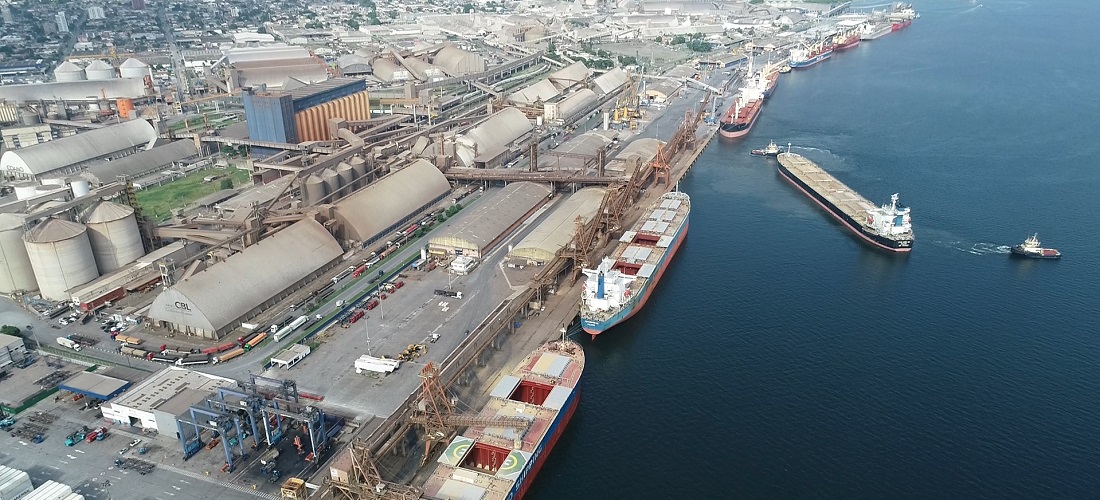
New tariffs for Paraná ports come into effect on Saturday, April 1st
Mar, 30, 2023 Posted by Gabriel MalheirosWeek 202316
New port tariffs will come into effect in Paraná from April 1st. The port community in Paranaguá and Antonina widely discussed the value readjustment proposal since 2021, even before Federal regulatory agencies approved it.
As a port authority, Portos do Paraná is responsible for maintaining, expanding, and modernizing the infrastructure of the Ports of Paranaguá and Antonina. “Resources gained from tariff collection are used to maintain the competitiveness of Paraná’s ports given the demand for exports and imports from the state, regional and national economy,” says CEO Luiz Fernando Garcia.
Tariffs, which make up about 70% of Portos do Paraná‘s income, vary based on the expected costs and expenses for the activities associated with each table. As shown in Table I, for instance, the tariffs must be sufficient to pay for the maintenance dredging and the buoys used for nautical signaling, as well as part of the costs associated with managing the environmental preservation, port security, information technology, and employee salaries for the Port Authority.
“After all these costs and expenses, there should still be a financial surplus for investments in new improvements and expansion,” adds Luiz Fernando Garcia. According to the executive, financially sound ports are fundamental not only to maintaining the maritime market’s health but also to guaranteeing the region’s economic and social development.
TABLES – The management of each port in Paraná is based on its unique characteristics and financial data. To reflect the pricing strategy that is most sensible for each port’s competitiveness and economic sustainability, the Port of Antonina and the Port of Paranaguá have different tariff tables.
In general, there are eight tariff assortments possible for in-port operations. Table I deals with the tariffs on using the Waterway Access Infrastructure (Inframar). Next, are the tariff tables applied for the use of the Mooring Facilities (pier), Land Infrastructure (yards), Use of Warehouses and Use of equipment, in addition to the tariffs for various standardized services, temporary use, and complementary ones.
Miscellaneous services include the use of truck and train weighing scales, cargo scanners, water and sewage values, as well as electricity.
The use of public port areas for moving or storing cargo that is not yet ready for transport is classified under temporary use.
The so-called complementary tables are those with less representative tariffs, which cover administrative services, such as issuing IDs, telephone extensions, and fees for boats and tugboats.
The current tariff readjustment follows under the standardization attempt of the National Waterway Transportation Agency (Antaq). According to the agency, all Port Authorities should conform to a new standard.
“Until then, ports could make up their tariff tables. Now, they all follow the same model,” explains the financial manager of Portos do Paraná, Lucas Sarmanho.
CHANGE – The financial manager also clarifies that some metrics have changed to adapt to the new Antaq rules. He says that out of those, “the main one is in Table I, which is now charged by the size of the ship, measured in DWT (dead weight tons) rather than the cargo handled.
The new tariff values will be charged on the operations of ships that dock at the Ports of Antonina and Paranaguá from 00:00h on April 1st, 2023, except for those ships that have already arrived at the Port before March 27th.
-
Ports and Terminals
Oct, 05, 2023
0
Port of Santos prepares USD 560 M investment in Peripheral Avenue
-
Shipping
Oct, 04, 2023
0
Maersk ship cuts short trip after container catches fire
-
Grains
Oct, 26, 2021
0
September agro export revenue up 36%
-
Sugar and Ethanol
Oct, 17, 2022
0
Brazilian hegemony over sugar market strengthens



